6 Fun Multisensory Learning Activities to Supercharge Your Reading Instruction
Discover the science-backed effectiveness of multisensory learning activities in helping struggling readers excel! These 6 learning activities will engage multiple senses at once and help your readers retain more learning while having WAY more fun!
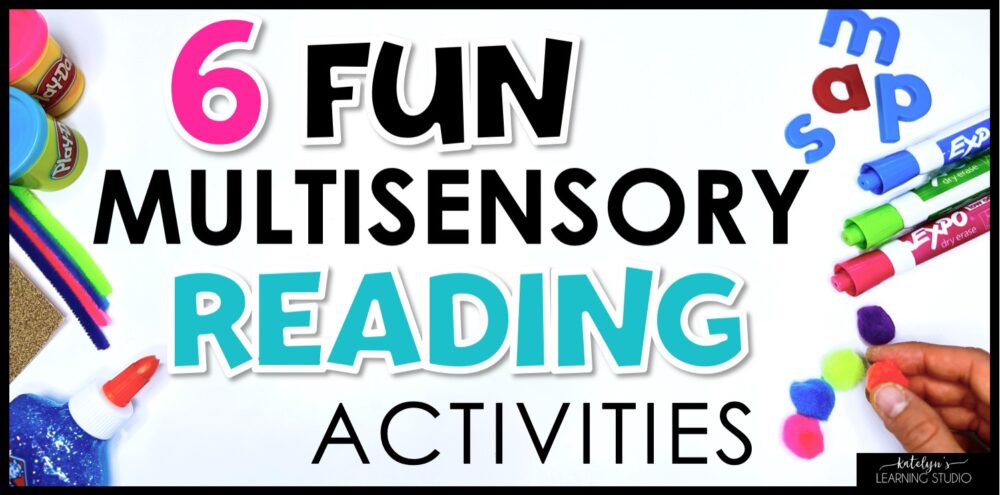
Multisensory learning is one of the best research-based strategies for teaching reading.
If there is one reading instructional strategy you need to try, it is incorporating multisensory learning activities into your reading lessons!
Multisensory learning is the magic trick in reading instruction that increases BOTH engagement AND effectiveness. It’s a win-win for students and teachers!
🎬 Here’s a video showing all of the activities in action👇
Have you ever had those moments in the classroom when you can practically see the energy fizzling out? When you find yourself desperately trying to engage your students, but they seem to be drifting off into a land of daydreams?
Trust me, I’ve been there.
And you know what is, without doubt, the #1 way I get my students’ attention back?
Multisensory learning!
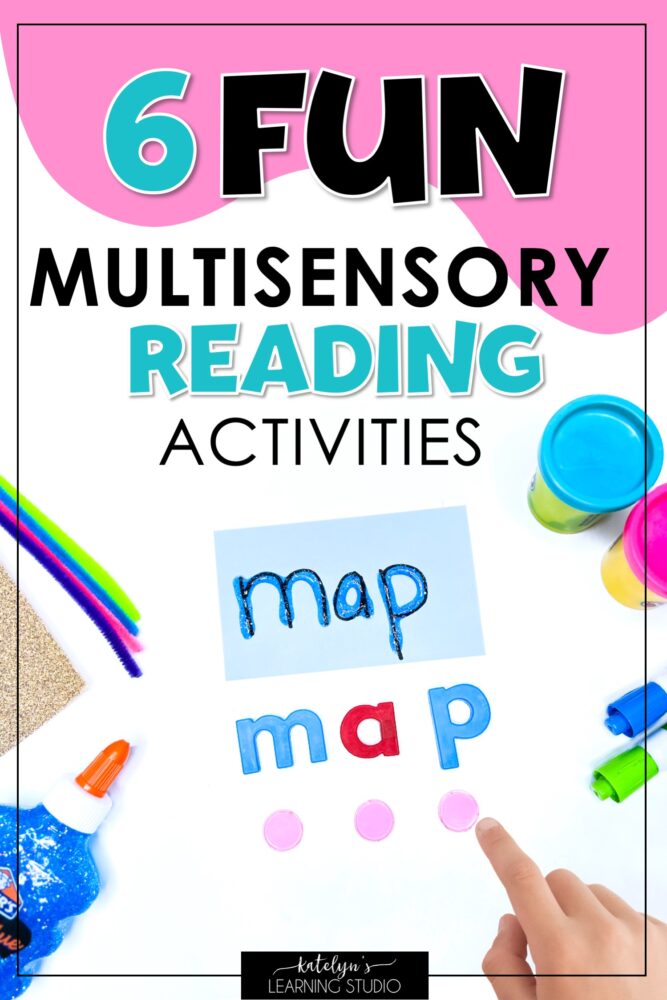
6 multisensory learning activities to help struggling readers.
I just whip out a fun little gadget, add some colorful visual cues, teach a song–engage those little minds and senses, and– POW, they are totally there for it!
I’ve also seen the transformative power of multisensory learning in reaching students who are struggling with reading difficulties. Not only does it spark their engagement and motivation, but it is scientifically proven to boost learning and retention!
Multisensory Reading Activities
In today’s blog post, we’re diving headfirst into a treasure trove of multisensory learning activities that will captivate your students’ attention and make learning an unforgettable adventure. So let’s dive into these sensory-rich activities!
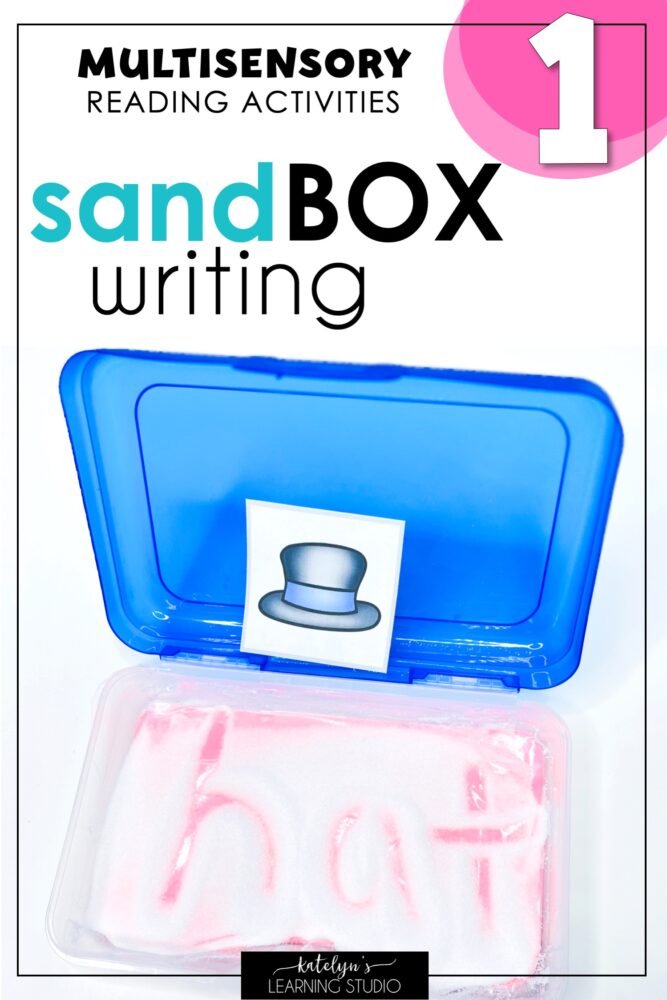
Every multi sensory learner will love writing their words in sand!
1. Multisensory Learning Activity: Sand Box Writing
Just spend a little prep time, and you have a versatile, engaging, and multisensory learning tool at your fingertips for the whole year! You can use these sandboxes in so many ways.
Here’s how to make them:
- Grab a pencil box, a colored piece of paper, and salt
- Trace the bottom of the pencil box on the paper, then cut out slightly smaller than what you traced.
- Tape the paper to the button of the pencil box with lots of strapping tape.
- Pour salt into the box (enough to cover the bottom, but still see the color when you drag your finger in through the salt).
Ideas for how to use them:
- Copy letters or words in the sand
- Say a letter sound and students write the letter
- Say a word and students write the word
- Write spelling words in the sand
- Map words
- Say a word and count the sounds
- Drop a marble for each sound in the sand
- Use your finger to write the letters for each sound under each marble
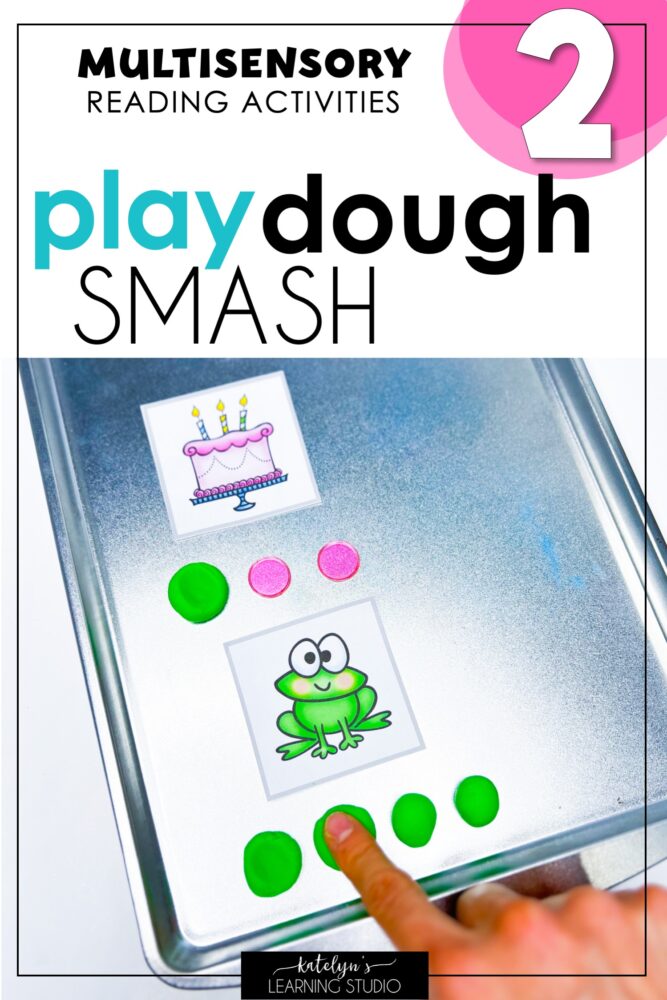
Playdough is the ultimate tool for multisensory activities!
2. Multisensory Learning Activity: Play Dough Smash
Play dough is squishy, colorful, and satisfying to smash! You can roll it and shape it, and it has its own unique smell. There are so many senses involved in playdough! Plus there are sooo many ways to use it to add some multisensory learning to your reading lessons.
Here are some ideas:
- Practice blending and segmenting: Roll out balls of play dough for each sound in a word. Smash each ball as you say each sound.
- Sounding out words: Place a ball of play dough under each letter/digraph in a written word. Have them smash a play dough ball as they sound out each sound in the word.
- Beginning spelling: Press letter tiles into a flattened circle of play dough to spell words.
- Spelling: Flatten a circle of play dough and use a toothpick to write words in it.
Here’s an entire blog post with more ideas on teaching phonics using play dough!
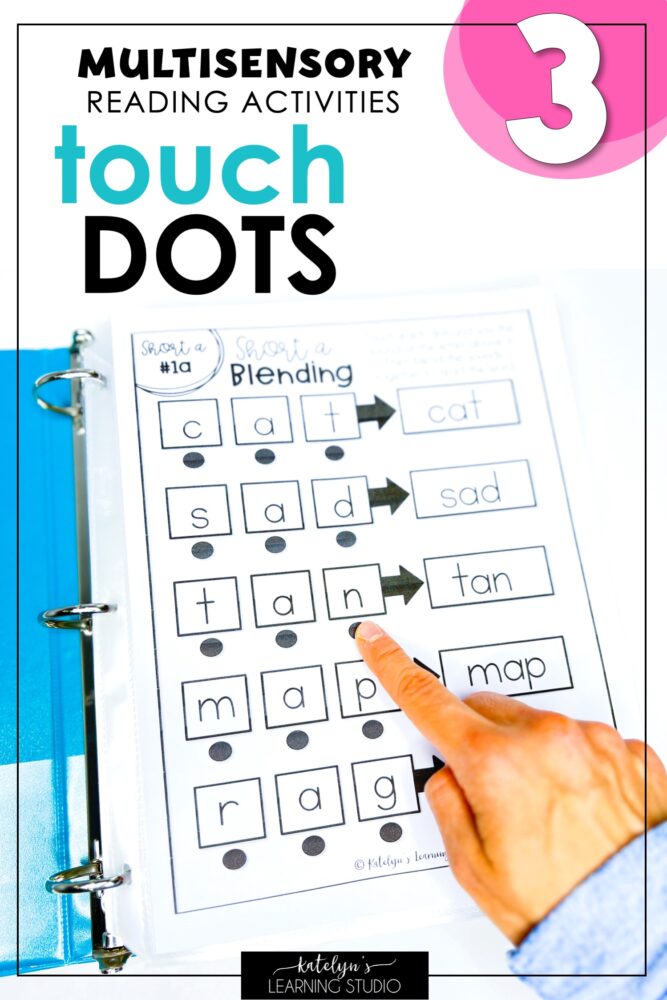
Multisensory learning is essential in reading intervention, like with this interactive CVC Words Intervention Binder.
3. Multisensory Learning Activity: Touch Dots
Touch dots are a simple way to add visual and tactile senses to reading.
Simply:
- Draw a dot under each SOUND in the word.
- If more than one letter makes a sound, draw ONE dot under all of the letters that make that sound.
- Have students touch each dot as they say the sound of the letter(s) above it.
- Optional: you can have the letters separated by spaces, lines, or boxes to further show how the letters map to each sound.
- You either can draw the dots by hand, or use ready-to-go resources with dots printed for you like in this phonics binder or this cvc words binder.
The idea is for students to have a visual and tactile cue for each sound they read in a word.
This activity is a great word mapping activity to promote orthographic mapping!
If you want loads of print-&-go activities with touch dots already made for you, check out my Phonics Intervention Binder or CVC Words Intervention Binder.
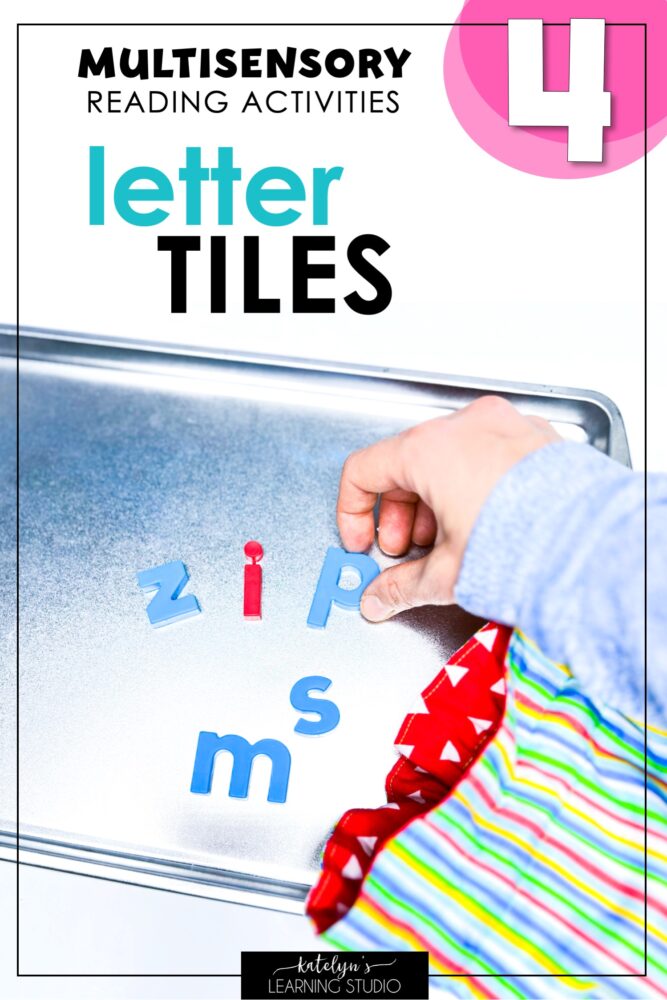
When using a multisensory approach, letter tiles are a great way to target tactile and kinesthetic senses.
4. Multisensory Learning Activity: Letter Tiles
Letter tiles give students a concrete base to anchor letter sounds. They can pick them up, move them, touch them, and not be overwhelmed with the complicated skill of writing them. Plus, you can use them in so many ways!
Here are a few ideas:
- Say a letter sound and have students pick the letter that goes with it.
- Put tiles in a bag. Have students pull out a letter and say the sound it makes.
- Spell words by laying out letters. Have a select number of letter tiles laid out for students to choose from as they spell.
- Practice real and nonsense cvc words. Lay a vowel down. Have students pull consonants from a bag and put them in front of and behind the vowel to make new words.
- Practice word families. Lay out a word ending. Switch out letter tiles in front of it to make new words in that word family.
- Practice phonics patterns. Lay out a phonics pattern. Switch out letters before and after it to make new words.
Here are some fun ways to make letter tiles even more multisensory:
- Use magnetic letter tiles on cookie sheets, a metal filing cabinet, or a magnetic whiteboard (or even a fridge or garage door at home!)
- Squish letter tiles into playdough
- Pull letter tiles out of a bag
- Use color-coded letter tiles (ex: blue consonants and red vowels)
- Use letter tiles in sensory bins (fill a small tub with dried beans and set a few letter tiles on top. Let students pick the tiles they need from the bin)
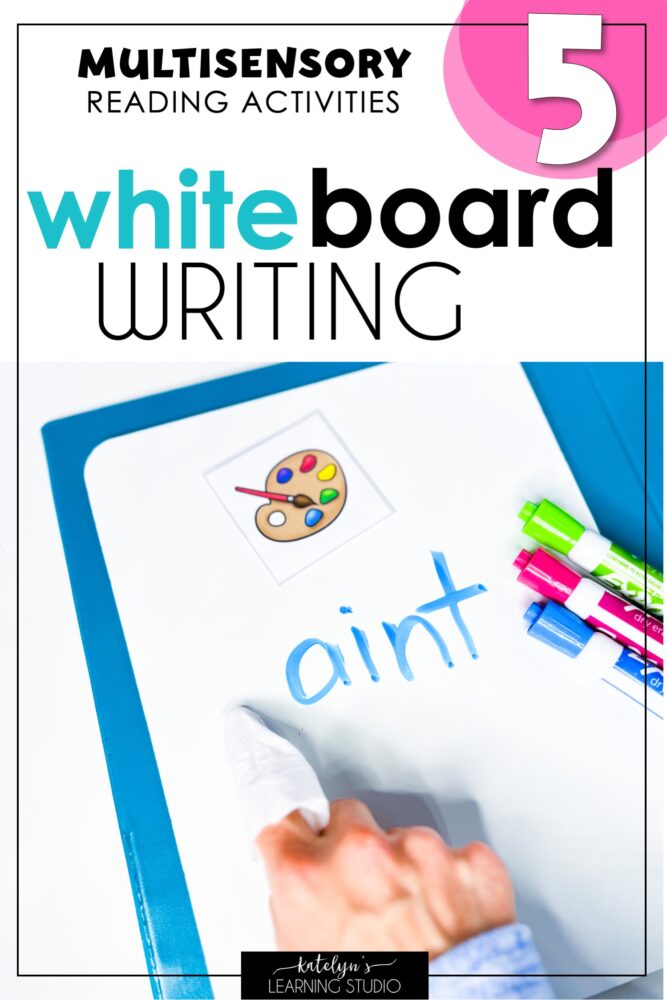
The multisensory teaching approach to reading should also include writing!
5. Multisensory Learning Activity: White Board Writing
This activity is SUPER simple but effective, and requires no prep!
- Have students write words on a whiteboard (and spell them out loud as they write–getting that extra auditory sense engaged).
- Then give them a tissue to cover their finger, and have them trace over the letters with their finger to erase them, saying the names of the letters again as they do.
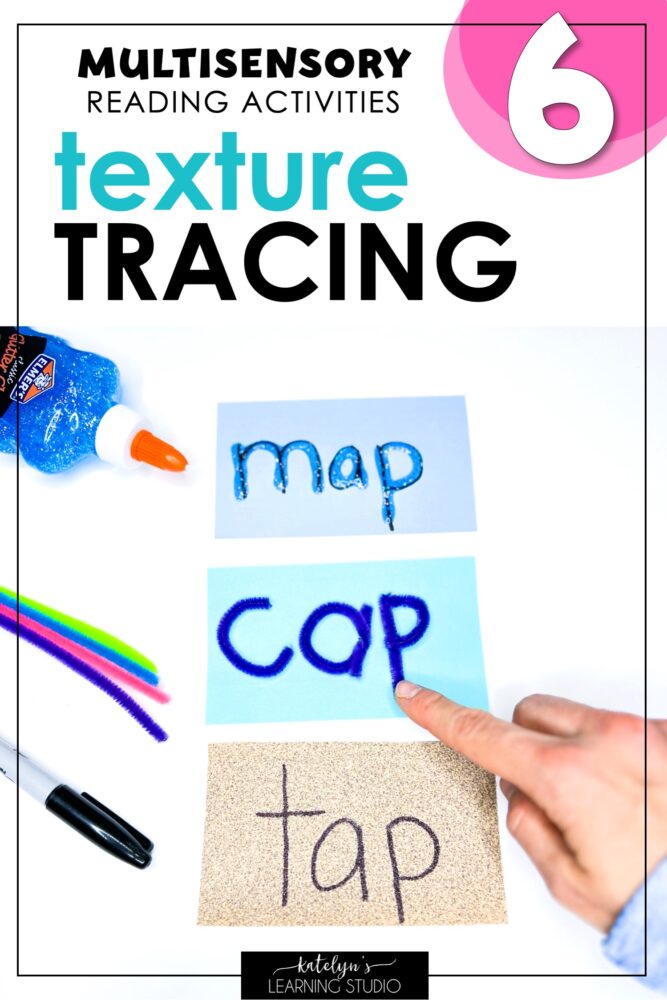
Multisensory reading with different textures can help boost engagement and learning.
6. Multisensory Learning Activity: Texture Tracing
This last multisensory learning activity is a great one for reading centers or independent practice. You can get creative and make different variations, but here are 3 simple ideas.
- First, you will choose a list of words (like spelling words, heart words, or words with the phonics pattern you are practicing).
- Then, make cards with different textures students can trace with their fingers.
Glitter Glue Cards
- Write the word on a notecard with a permanent marker.
- Use glitter glue to trace the word.
- Let the glue dry.
- You might need to go back and do several coats to make it thicker.
- Students can trace the letters with their hands as they spell the word out loud and then read it.
- Optional: have them write the word on their own after they trace and read it!
Pipe Cleaner Cards
- Write the word on a notecard with a permanent marker.
- Trace the letters with pipe cleaners, trimming the pipe cleaners as needed.
- Use a hot glue gun to trace the word with glue, then immediately stick the pipe cleaners deep into the glue.
- Let it dry.
- Students can trace the letters with their hands as they spell the word out loud and then read it.
- Optional: have them write the word on their own after they trace and read it!
Sand Paper Cards
- Cut sandpaper into note-card-sized squares (or buy them pre-cut)
- Write the word on it with a permanent marker.
- Students can trace the letters with their hands as they spell the word out loud and then read it.
- Optional: have them write the word on their own after they trace and read it!
For more multisensory learning activities and ideas, check out my Ultimate List of Reading Intervention Activities. It has LOADS of fun hands-on activities, all organized by learning type!
I hope you AND your students have so much fun trying out these multisensory learning activities! They are all so fun and they each engage multiple senses, which makes them so effective. Research tells us, everyone is a multisensory learner. Reading activities that incorporate multiple different senses at the same time are one of the best ways to reach struggling readers. Multi sensory learning is when the best learning takes place!
